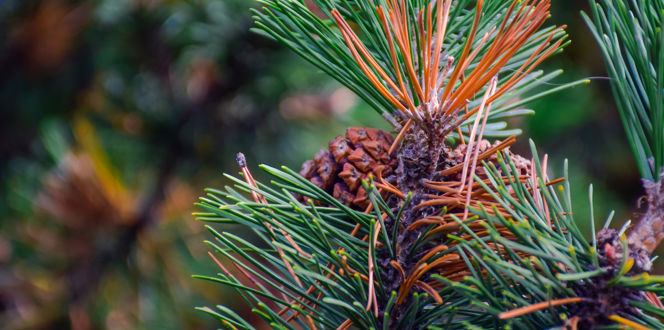Rhizophaera Needle Cast Description:
Rhizosphaera is a fungal genus that affects cone-bearing shrubs and trees throughout the Northern hemisphere. Cool, rainy weather and long periods of leaf wetness make this a common spring condition. However, this fungal infection can affect conifers anytime during the growing season.
Hosts:
Many types of spruce are very susceptible to rhizosphaera needle cast, including Colorado spruce and Engelmann spruce. White spruce are mildly susceptible. Other conifer hosts include deodar cedar, douglas fir, true firs, hemlocks, pines and coast redwood.
How to Identify Rhizosphaera Needle Cast:
One of the earliest symptoms of rhizosphaera needle cast in Colorado spruce is mottled-yellow needles that progressively turn bright yellow, then purplish-pink and eventually brown. Infected needles of other plant species typically become off-green before turning tan or brown. As fungi mature, rows of black fruiting bodies may appear on needles. Between 15 and 18 months after infection, needles typically begin to drop. Trees that lose first-year needles for several consecutive years appear thin, lose lower branches, and may eventually die.
Treatment & Management:
This disease can be difficult to control. With proper treatment, there is hope for conifers infected by this fungal pathogen. Treatment includes pruning severely affected branches and disposing of fallen needles, followed by applying an appropriate fungicide in spring. Repeat the application during the wet season, when environmental conditions are conducive for fungal development. During drought conditions, consider a combination of watering deeply, mulching to moderate soil temperature, and properly fertilizing to optimize nutrients. When transplanting trees, always allow for adequate spacing to promote air circulation and to help reduce infection.





